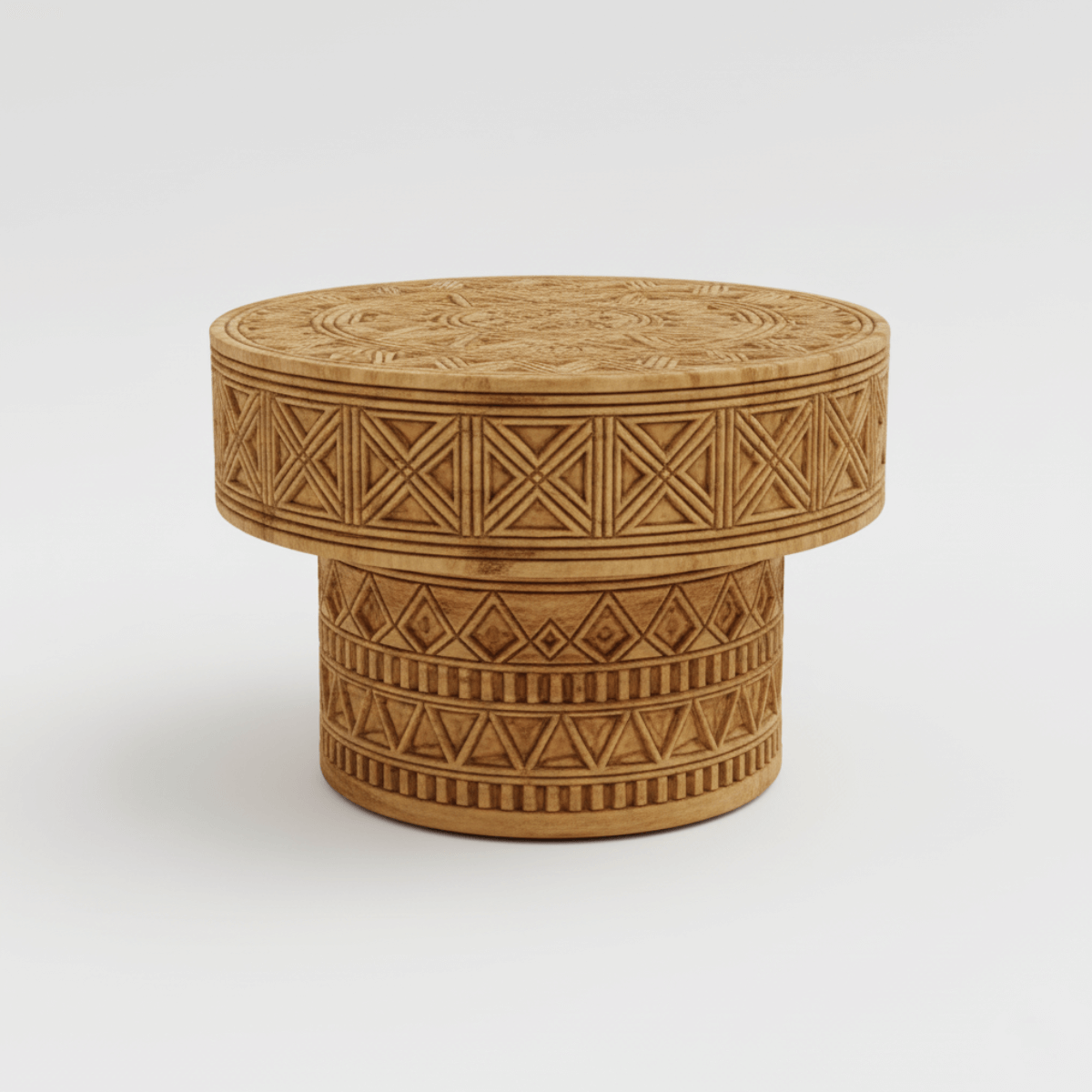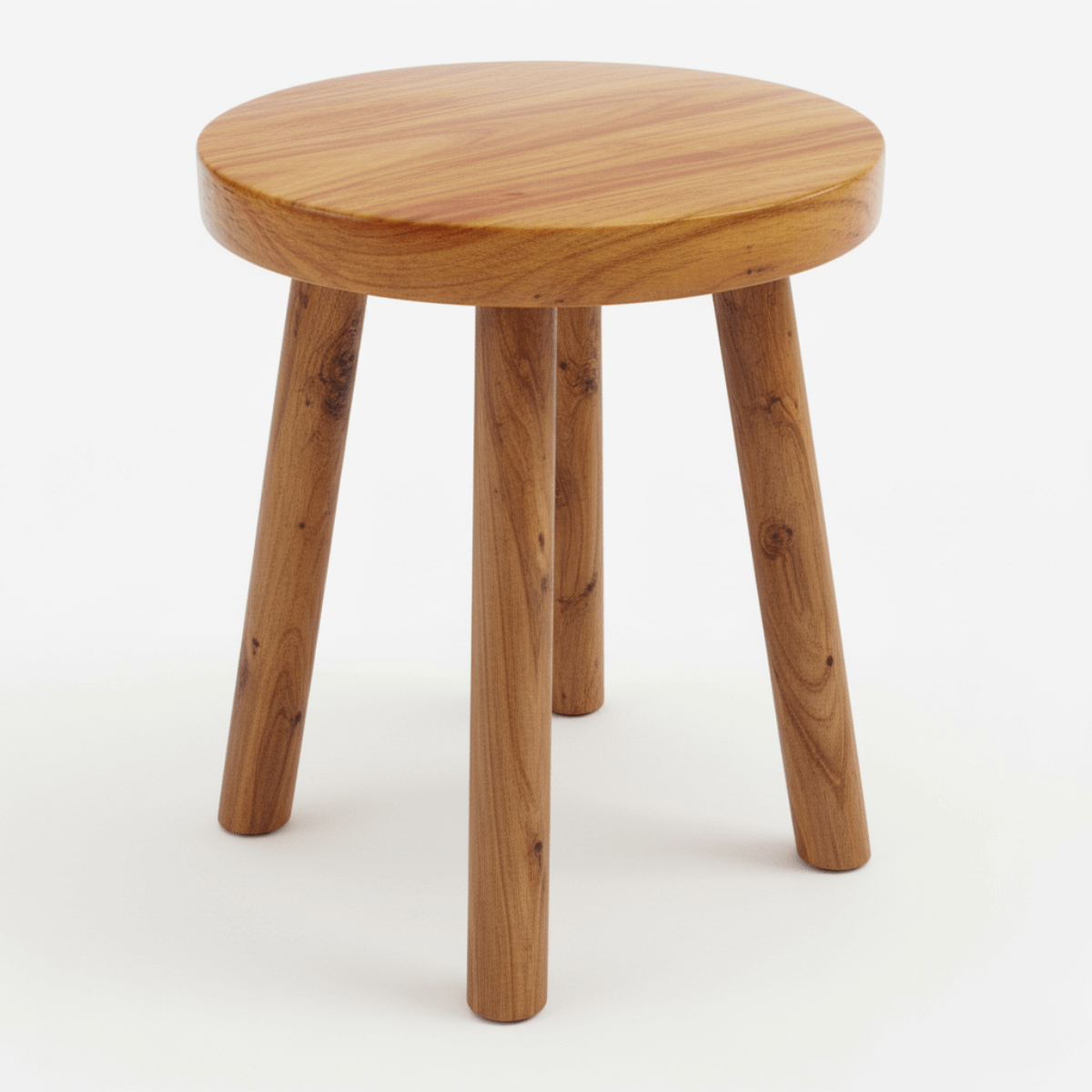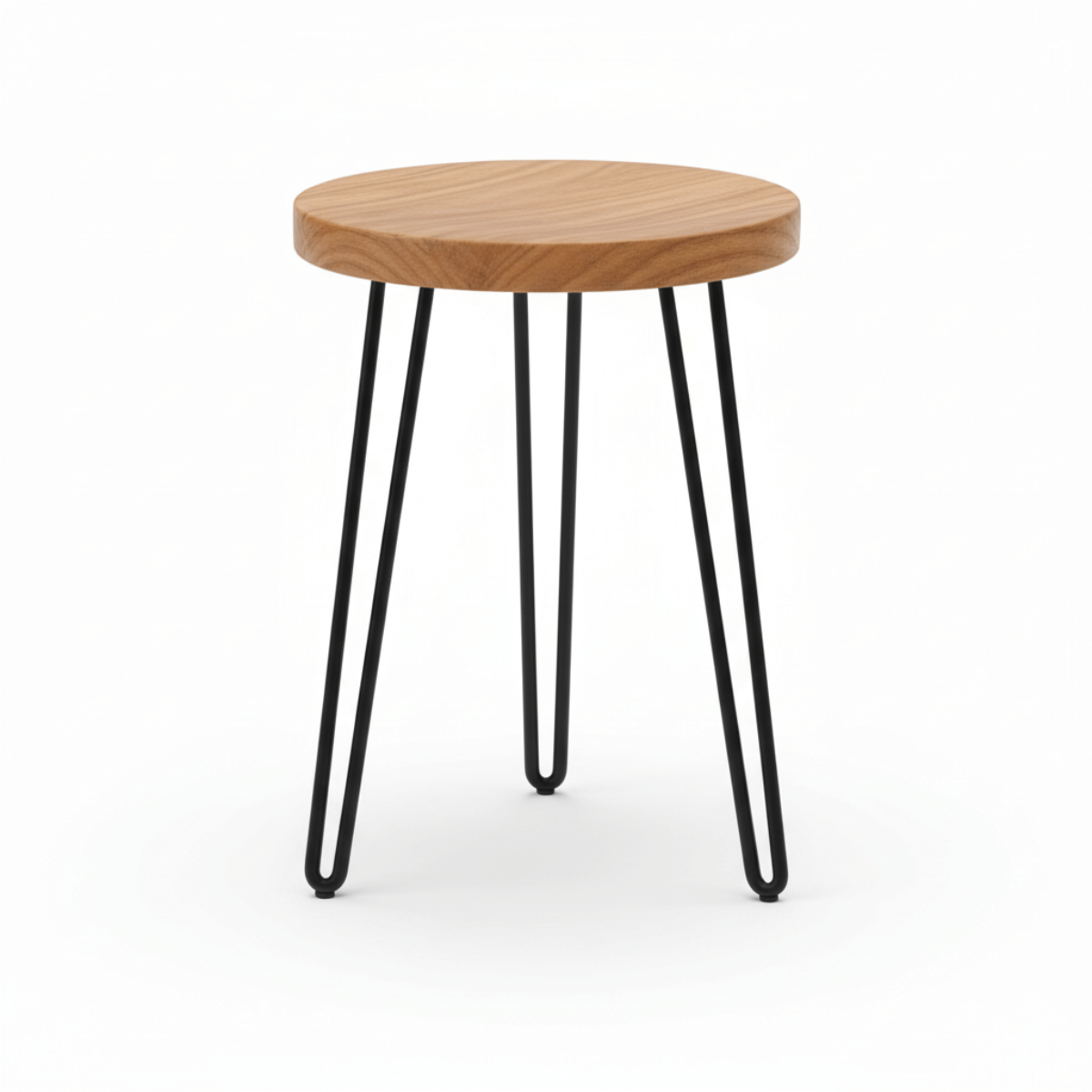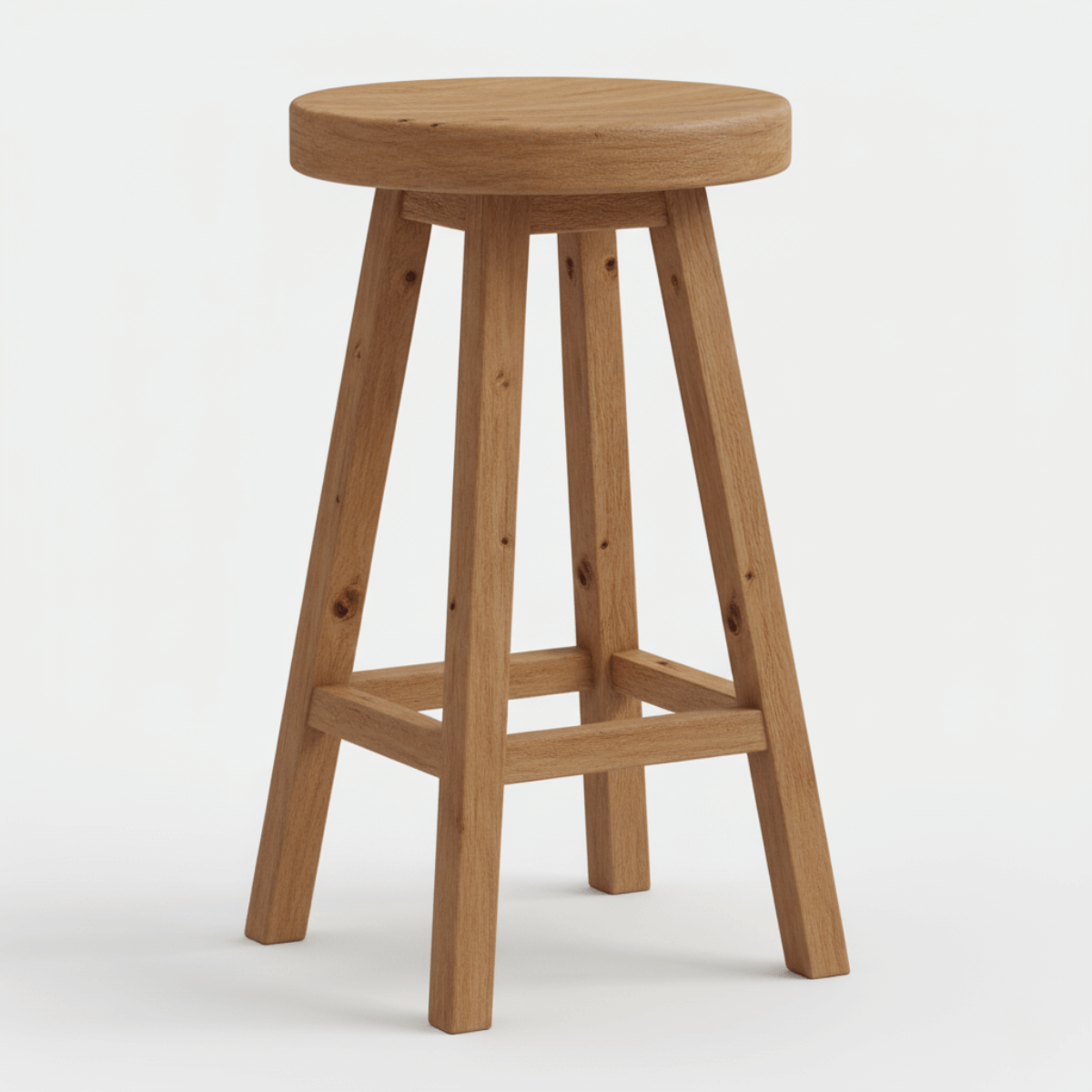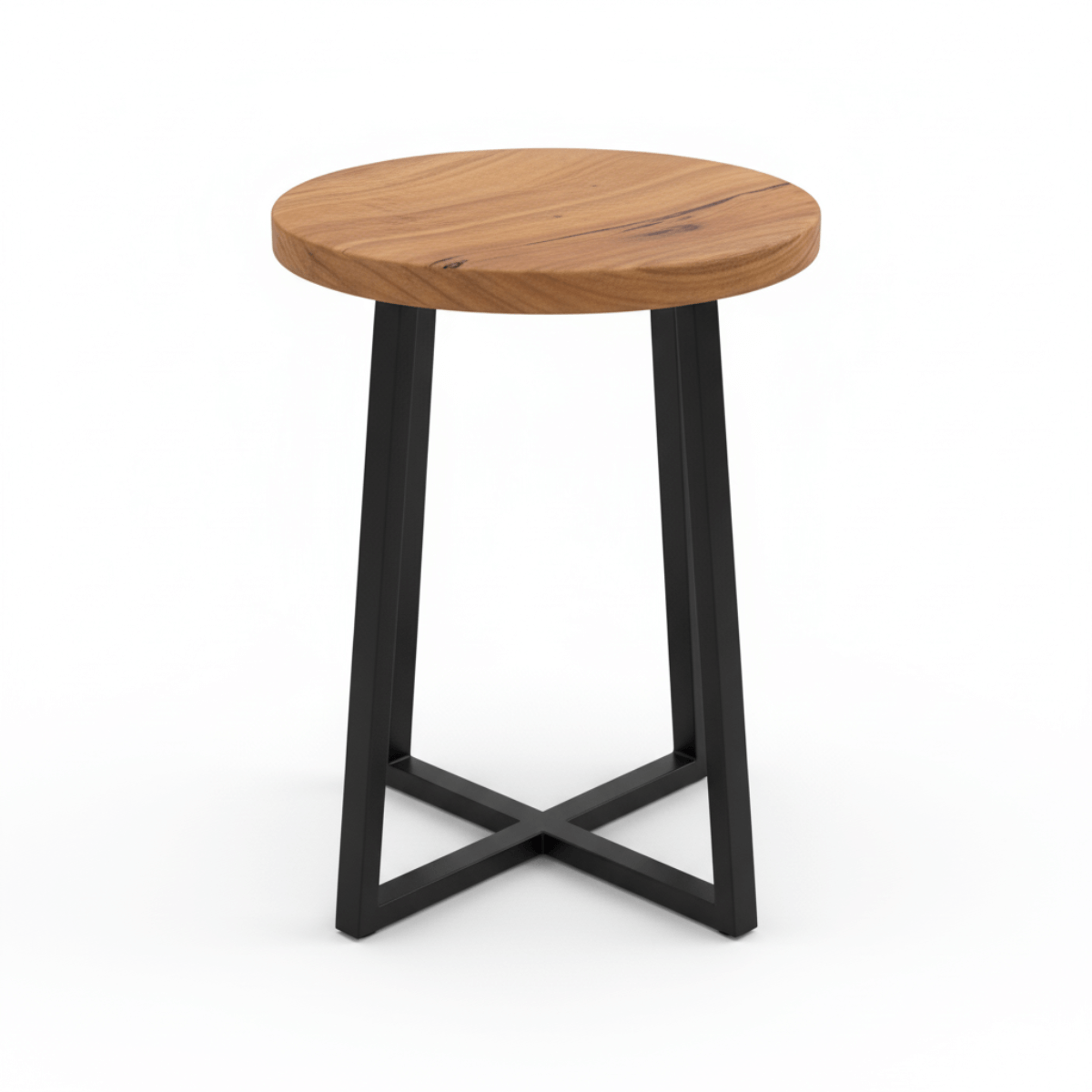The dining table is a central piece of your home's design, influencing both the room's aesthetic and its daily function. When selecting a new table, one of the most significant decisions you'll make is its shape. The two most common choices, round and rectangular, each offer distinct advantages and drawbacks.
This guide will provide a detailed comparison of round vs. rectangular dining tables to help you make an informed choice. We'll explore their design differences, seating capacities, and overall functionality. By the end, you'll have a clear understanding of which dining table shape best suits your space, lifestyle, and design preferences.
Design Differences: Round vs. Rectangular Tables
The shape of your dining table sets the tone for the entire room. A round table creates a sense of intimacy, while a rectangular table offers a more formal and traditional feel.
1. Fostering Connection with Round Dining Tables
Round dining tables are often praised for their ability to encourage conversation and create a cozy atmosphere. With no head of the table, everyone is positioned equally, making it easier for guests to interact with one another. This inclusive layout makes round tables perfect for fostering lively discussions and intimate gatherings. Their curved edges also introduce a softer, more organic element to a room, which can be a welcome contrast in spaces dominated by straight lines.
2. The Style and Versatility of Rectangular Dining Tables
Rectangular dining tables are a classic and versatile choice that fits well in most room layouts, especially long, narrow ones. Their linear shape provides a sense of order and formality, making them ideal for traditional or structured interior designs. Rectangular tables often come with extension leaves, offering flexibility for hosting larger groups. This adaptability makes them a practical option for those who entertain frequently.
Size and Seating Capacity
The shape of your dining table directly impacts how many people you can comfortably seat and how efficiently you use your dining space.
1. Seating Capacity Compared
Understanding the typical seating capacities for different table shapes is crucial for making the right choice.
- Round Dining Table Seating Capacity: A small round table (36-44 inches) typically seats up to 4 people. A medium-sized one (44-54 inches) can accommodate 4-6 people, while larger tables (60-72 inches) can seat 6-8. However, as round tables get larger, the distance between people sitting opposite each other increases, which can make conversation more difficult.
- Rectangular Dining Table Seating Capacity: Rectangular tables offer more straightforward seating arrangements. A standard 6-foot table can comfortably seat 6 people. An 8-foot table can accommodate 8-10 guests, and longer tables are perfect for entertaining large groups. Their shape allows for more seating in a smaller footprint compared to a large round table.
2. How Shape Affects Space Utilization
When considering round vs. rectangular tables for your space, think about traffic flow. A round table’s lack of sharp corners makes it a great choice for smaller rooms or high-traffic areas, as it allows for easier movement around it. This is a significant benefit for households with children.
Rectangular tables, on the other hand, are best suited for dedicated dining rooms where they can be centered with ample space on all sides. They align well with the walls of a room, creating a sense of balance and order.
The Case for Round Dining Tables
Round dining tables have several benefits that make them a popular choice for many homes.
1. Pros of Round Tables
- Space-Saving: For small, square rooms, a round table is often the best dining table for small spaces. Its smaller footprint and lack of corners maximize the available area.
- Encourages Conversation: The circular design promotes a more intimate dining experience where everyone can easily engage with each other.
- Softer Aesthetic: The curved lines of a round table can soften the look of a room, adding a touch of elegance and flow.
- Family-Friendly: With no sharp corners to bump into, round tables are a safer option for families with young children.
2. Cons of Round Tables
- Limited Surface Area: Round tables generally offer less surface area in the center, which can be a drawback when serving multiple large dishes.
- Not Ideal for Large Groups: While you can find large round tables, they can make conversation across the table challenging due to the increased distance. They also require a significant amount of space.
- Placement Limitations: A round table works best when centered in a room and may look awkward pushed against a wall.
The Appeal of Rectangular Dining Tables
Rectangular dining tables remain a timeless choice due to their practicality and classic appeal.
1. Pros of Rectangular Tables
- Accommodates More People: A rectangular dining table for large families or frequent entertainers is often the best choice, as it can comfortably seat more guests.
- Formal Appearance: The linear shape lends a sense of formality and tradition to a dining space, making it suitable for classic and modern interiors alike.
- Flexible Placement: While they look best centered, rectangular tables can also be placed against a wall to save space, sometimes with a bench on one side.
- Extension Options: Many rectangular tables come with extension leaves, providing the flexibility to accommodate extra guests when needed.
2. Cons of Rectangular Tables
- Requires More Space: Rectangular tables typically require a larger room to avoid feeling cramped. You need enough clearance on all sides for chairs and movement.
- Sharp Corners: The corners can be a hazard, especially in households with small children or in tight spaces.
- Can Feel Less Intimate: The length of a rectangular table can make it difficult for people at opposite ends to converse, creating a less connected atmosphere.
How to Choose the Right Shape for Your Home
Now that you understand the pros and cons, how do you choose between a round and rectangular dining table? The decision comes down to balancing your room’s characteristics with your personal needs.
1. Assess Your Room’s Size and Layout
Start by measuring your dining area. As a general rule, you should leave at least 36 inches of space between the edge of the table and the walls or other furniture to allow for easy movement.
- For a small, square room, a round table will likely be the most efficient use of space.
- For a long, narrow room, a rectangular table will complement the room’s proportions and provide better flow.
2. Consider Your Household and Entertaining Habits
Think about your daily life. How many people will be using the table regularly? Do you frequently host large dinner parties, or are your gatherings usually small and intimate?
- If you have a large family or love hosting big groups, a rectangular table with extension options is a practical choice.
- If your dinners are typically for a small group and you value conversation, a round table will create a more intimate and connected experience.
3. Align with Your Design and Lifestyle
Finally, consider your personal style. Do you prefer a formal, structured look or a more casual, relaxed atmosphere? The shape of your table should align with your home’s overall aesthetic. If you have an open-concept living area, a round table can help define the dining space without creating harsh visual barriers.
Finding the Perfect Balance
Choosing between a round and a rectangular dining table ultimately depends on a thoughtful evaluation of your space, needs, and style. A round table fosters intimacy and works well in smaller areas, while a rectangular table offers formality and accommodates larger groups. By weighing the factors of room size, seating needs, and design preference, you can select a dining table that not only fits your room but also enhances your life.
Ready to find the perfect table for your home? Explore our collection of round and rectangular dining tables, or contact our design consultants for personalized recommendations to help you make the right choice.


